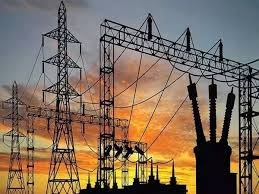UK power sector cuts fossil fuel use to new lows

Littleton: Power producers in the United Kingdom cut the use of fossil fuels in electricity generation by 16% over the first five months of 2024 from the same period in 2023, data from think tank Ember shows.
The 33.55 terawatt hours (TWh) of electricity generated from fossil fuels was the lowest for the January to May period in at least nine years, and marks the third straight year of cuts to fossil fuels in UK power generation during that window.
UK power sector emissions from fossil fuels have also fallen, dropping by 14% or by just over 3 million metric tons of carbon dioxide (CO2) during January to May in 2024 from 2023.
Power firms also lifted output from clean energy sources by 10% during the January to May window, which resulted in clean power fuels accounting for a record 66.1% average share of total electricity generation during that period.
That share of clean electricity generation compares to just under 61% over the same period in 2023, and so marks a significant expansion to clean power utilisation in UK electricity generation this year.
The UK’s clean power share for the first five months of 2024 is also higher than the European average (63%), and is well above that of Germany (59%) and Italy (54%), Ember data shows.
And the 14% drop in the UK’s fossil fuel emissions in power production through May is also steeper than the 10% fall recorded by Europe’s power sector over the same period.
Even so, UK power producers seem to be struggling to lift total electricity generation levels despite the steady climb seen in clean power output.
From January through May, total UK electricity output contracted by nearly 2% from the same period in 2023, and to the lowest for that window in at least nine years.
Some of that drop in overall electricity supply from utilities has been offset by improved energy efficiency measures by consumers plus more behind-the-meter solar generation systems in UK households and businesses.
However, sluggish manufacturing activity has also stifled electricity and power demand, with UK companies grappling with subdued consumer demand across Europe and the additional challenge of altered trade terms following Brexit.
Going forward, any sustained recovery in manufacturing activity would result in higher total power demand, which may place strain on power producers to lift generation from fossil fuels alongside clean power sources.
A key constraint on clean power generation in the UK is the country’s wind speeds at turbine level.
Wind power was the single largest source of electricity during January through May, exceeding natural gas generation by around 20%, according to LSEG.
And while total wind generation was up by 11% during the January to May window from the same months in 2023, total wind generation levels tend to slump over the summer months due to low wind speeds during the warmest time of year.
U.K. seasonal solar & wind electricity generation
In 2023, wind electricity output during June, July and August averaged 40% less than during January through March, data from Ember shows.
If wind speeds undergo a similar slowdown in 2024, power producers may struggle to sustain total electricity supply levels without resorting to lifting generation from fossil fuels, especially natural gas.
Power firms can expect additional generation from solar farms, which tend to hit peak output during summer months.
But as solar power generation capacity is roughly half that of wind generation capacity in the UK, and can only produce electricity during daylight hours, overall power supplies still look set for a decline if wind generation slumps.
That suggests that even though clean power sources have made big gains in the UK’s power mix so far in 2024, power producers may be forced to dial up output from natural gas going forward if total power demand rises just as wind farms enter their weakest production period.
Over the longer run, however, the UK’s power system looks set to become even cleaner as more outdated fossil fuel power stations are retired and additional renewable generation capacity is brought online.





